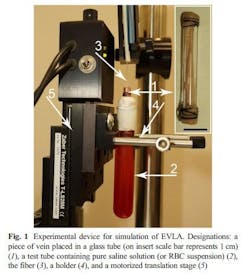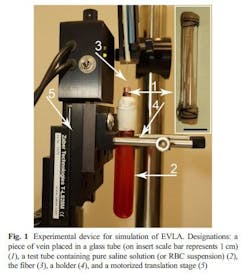New study evaluates endovenous laser ablation of varicose veins
Many publications have presented results of investigations aimed at the development of methods of laser ablation for varicose veins, as it is an effective and minimally invasive technique for treatment. However, this kind of therapy is associated with significant collateral damage because of the high output power of the laser. Therefore, it is an important question in vein surgery to optimize the laser characteristics for ablation.
Related: Minimally invasive varicose vein treatments -- and sales of treatment devices -- set to soar
In a newly published study, a team of researchers from Ogarev Mordovia State University (Saransk, Russia) and Kazan Federal University (Kazan, Russia) performed experiments on endovenous laser ablation (EVLA) of varicose veins in vitro using laser radiation from a solid-state laser, allowing them to identify the role of a carbonized layer of blood.
In EVLA, it is necessary to expose the laser radiation upon a region of the vessel so that it receives sufficient energy to cause thermal damage. On one hand, the value of this energy should provide coagulation of vein, and on the other, it should be optimized so that the structure of the surrounding healthy tissues has received a minimum degree of damage.
An experimental series with saline solution and red blood cell (RBC) suspension in the venous lumen was performed to identify the impact of a heated, carbonized layer precipitated on the fiber end face vs. the efficiency of EVLA. Results of these experiments confirmed that the presence of a heated, carbonized layer on the fiber end face increases the efficiency of EVLA.
Further experiments are planned for process optimization. For instance, the researchers plan to use radial emitting fibers since this technique can minimize a possibility of vein perforations.
Full details of the work appear in the journal Lasers in Medical Science; for more information, please visit http://dx.doi.org/10.1007/s10103-016-1877-z.

